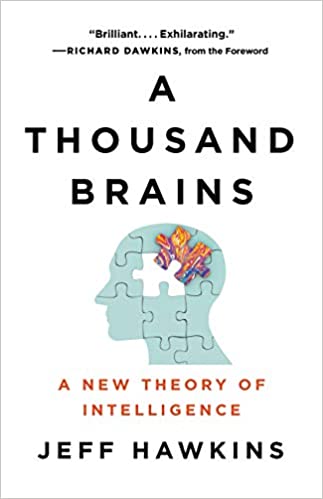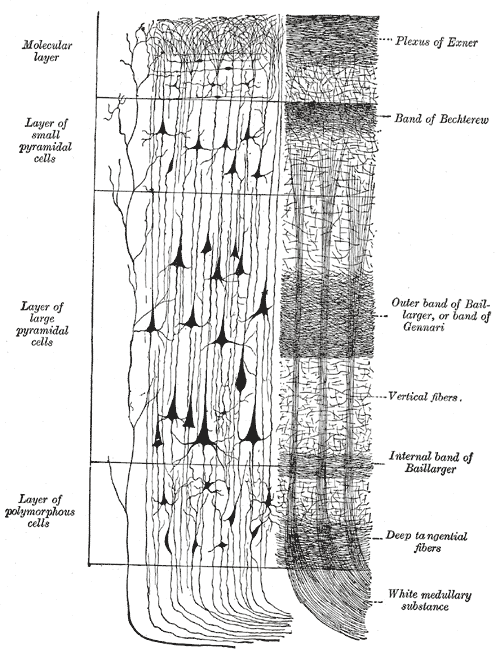Intelligence: A Thousand Brains — or a Thousand Theories?
What does the iconic mammalian neocortex do that equivalent systems in birds and octopuses can’t do? That’s not clear
Jeff Hawkins, inventor of PalmPilot (a smartphone predecessor) and co-founder of Numenta (2005), does not lack confidence. After an interview with him in connection with his new book, A Thousand Brains: A New Theory of Intelligence (Basic Books 2021), Will Douglas Heaven tells us at MIT Review, “Neuroscientist and tech entrepreneur Jeff Hawkins claims he’s figured out how intelligence works—and he wants every AI lab in the world to know about it”:
He’s not the first Silicon Valley entrepreneur to think he has all the answers—and not everyone is likely to agree with his conclusions. But his ideas could shake up AI.
Will Douglas Heaven, ““We’ll never have true AI without first understanding the brain”” at MIT Technology Review (March 3, 2021)
Hawkins started out as an AI guy but took a PhD in neuroscience and, like many others, tries to apply some AI concepts to understanding human intelligence and vice-versa:
I look at the progress that has been made recently with deep learning and it’s dramatic, it’s pretty impressive—but that doesn’t take away from the fact that it’s fundamentally lacking. I think I know what intelligence is; I think I know how brains do it. And AI is not doing what brains do.
Will Douglas Heaven, ““We’ll never have true AI without first understanding the brain”” at MIT Technology Review (March 3, 2021)
His efforts at understanding and mimicking what human brains do have led him to a theory of intelligence. He focuses on the neocortex, the “mammalian” brain, which rendered mammals distinct from birds, reptiles, and invertebrates. The neocortex (columns pictured) has traditionally been assumed to be the seat of greater thinking abilities:
Collectively, the neocortex “learns a model” of the world, and continuously updates it. Hawkins says that there is no central control room in our brains. Instead, our perception is a consensus which the columns reach by voting. Within the columns – indeed, within the neurons – predictions are made, and depending how successful their predictions are, the neurons will vote for their version of events. The model which emerges is the result of their aggregate strength of those predictions …
Calum Chace, “A New Theory Of Intelligence: Review of “A Thousand Brains” by Jeff Hawkins” at Forbes
Hence his “thousand brains” concept, where each neuron has a vote. Hawkins thinks the neocortex relies heavily on copying and on learning algorithms,“a natural guess from his own computer science background:
Hawkins offers various pieces of evidence that the neocortex runs a single, massively-parallel, legible learning algorithm. First, as above, “the detailed circuits seen everywhere in the neocortex are remarkably similar”. Second, “the major expansion of the modern human neocortex relative to our hominid ancestors occurred rapidly in evolutionary time, just a few million years. This is probably not enough time for multiple new complex capabilities to be discovered by evolution, but it is plenty of time for evolution to make more copies of the same thing.”
Steven Byrnes, “Book review: “A Thousand Brains” by Jeff Hawkins” at Less Wrong (March 3, 2021)

In his endorsement at Numenta, prominent neuroscientist Henry Markram offers
Jeff shows that the answers lie in the model of the world that our brain builds. He explains how the neocortex, the most evolved part of the brain, builds its own personalized, colorized and fanciful copy of the world. If it were not for this model, that we build ourselves, we would not even know that we exist, or that anyone exists or that the universe exists. The neocortex does not care what model it builds, it works with the materials we feed it.
Hawkins’s model sounds intended to explain how intelligence (and consciousness?) was formed accidentally by algorithms no one wrote and by massively parallel copying that stands in for what evolution could not “discover.”
Many theorists are looking for just such a model but one problem is worth noting:
As all participants in the discussion would acknowledge, recent research has shown that most functions associated with, for example, human consciousness, are distributed widely through the brain. Hawkins’s thesis depends on an earlier idea, now considered doubtful, that human intelligence comes from the mammalian neocortex whereas the rest of the human brain is the older lizard brain (that’s Paul D. MacLean’s triune brain theory). As a generally sympathetic reviewer has noted:
I think Hawkins’s new brain / old brain discussion is bound to drive neuroscientist readers nuts. See, for example, the paper Your Brain Is Not An Onion With A Tiny Reptile Inside for this perspective, or see the current widespread dismissal of “triune brain theory”. The mammalian neocortex is in fact closely related to the “pallium” in other animals, particularly the well-developed pallium in birds and reptiles (including, yes, crocodiles!). One researcher (Tegan McCaslin) attempted a head-to-head comparison between bird pallium and primate neocortex, and found that there was no obvious difference in intelligence, when you hold the number of neurons fixed.
Steven Byrnes, “Book review: “A Thousand Brains” by Jeff Hawkins” at Less Wrong (March 3, 2021)
It’s worse than that. It’s not even clear any more that intelligence (never mind consciousness, a bigger and much more difficult issue) has a systematic mechanical relationship to the brain. Smart birds are now a staple of discussions of animal intelligence and so are smart octopuses (invertebrates). They have quite different brain arrangements from mammals.
That’s assuming a brain is even needed, depending on the task. We’ve also discovered that one-celled life forms with no nervous system or brain can learn. Slime molds can make decisions collectively without any central brain. Even bacteria show intelligence in some situations. And plants form communities with extensive relationships and communications without the question of a brain even coming up.
Many life forms, especially mammals, birds, and — for example — octopuses, can be shown to have not only intelligence but some level of consciousness and emotion (minimal self) though not specifically human levels of cognition.
Meanwhile, our human consciousness remains something of a mystery. It has no apparent seat in the brain. People are conscious in a human way with split brains, half a brain, or almost no brain. If our mammalian neocortex features a thousand brains, as Hawkins suggests, none seems explicitly tied to human consciousness in particular.
A thousand brains? Maybe. What we have for sure, by now, is a thousand theories about it.
You may also wish to read: Four researchers whose work sheds light on the reality of the mind The brain can be cut in half, but the intellect and will cannot, says Michael Egnor. The intellect and will are metaphysically simple.
